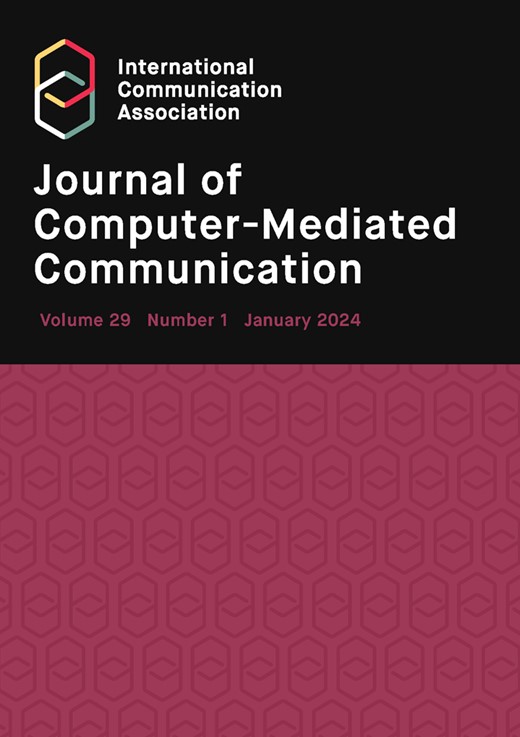揭示有争议的科学话语中的性别陈规定型观念:跨数字平台的计算文本和视觉分析证据
IF 5.7
1区 文学
Q1 COMMUNICATION
引用次数: 0
摘要
本研究探讨了在 YouTube 和 TikTok 这两个平台上,围绕有争议的科学问题展开的讨论是如何反映性别刻板印象的。我们利用去个体化效应的社会认同模型,就内容创作者如何利用与性别相关的刻板印象吸引受众提出了假设和研究问题。我们对气候变化和疫苗接种视频进行了分析,并考虑了标题和缩略图等各种模式,结果发现,与儿童和健康相关的主题经常出现在提及女性的视频中,而科学误导则更常见于提及男性的视频中。我们观察到在描绘性别刻板印象方面的跨平台差异。YouTube 的视频描述通常强调与女性相关的道德语言,而 TikTok 则强调与男性相关的道德语言。YouTube 的缩略图经常以气候活动家或与大自然亲密接触的女性为主题,而 TikTok 的缩略图则以 Vlog 风格的自拍照和女性化的手势来展示女性。这些发现通过跨平台、多模式的方法促进了人们对性别和科学的理解,并提供了潜在的干预策略。本文章由计算机程序翻译,如有差异,请以英文原文为准。
Uncovering gender stereotypes in controversial science discourse: evidence from computational text and visual analyses across digital platforms
This study examines how gender stereotypes are reflected in discourses around controversial science issues across two platforms, YouTube and TikTok. Utilizing the Social Identity Model of Deindividuation Effects, we developed hypotheses and research questions about how content creators might use gender-related stereotypes to engage audiences. Our analyses of climate change and vaccination videos, considering various modalities such as captions and thumbnails, revealed that themes related to children and health often appeared in videos mentioning women, while science misinformation was more common in videos mentioning men. We observed cross-platform differences in portraying gender stereotypes. YouTube’s video descriptions often highlighted women-associated moral language, whereas TikTok emphasized men-associated moral language. YouTube’s thumbnails frequently featured climate activists or women with nature, while TikTok’s thumbnails showed women in Vlog-style selfies and with feminine gestures. These findings advance understanding about gender and science through a cross-platform, multi-modal approach and offer potential intervention strategies.
求助全文
通过发布文献求助,成功后即可免费获取论文全文。
去求助
来源期刊
CiteScore
9.60
自引率
2.80%
发文量
26
期刊介绍:
The Journal of Computer-Mediated Communication (JCMC) has been a longstanding contributor to the field of computer-mediated communication research. Since its inception in 1995, it has been a pioneer in web-based, peer-reviewed scholarly publications. JCMC encourages interdisciplinary research, welcoming contributions from various disciplines, such as communication, business, education, political science, sociology, psychology, media studies, and information science. The journal's commitment to open access and high-quality standards has solidified its status as a reputable source for scholars exploring the dynamics of communication in the digital age.

 求助内容:
求助内容: 应助结果提醒方式:
应助结果提醒方式:


